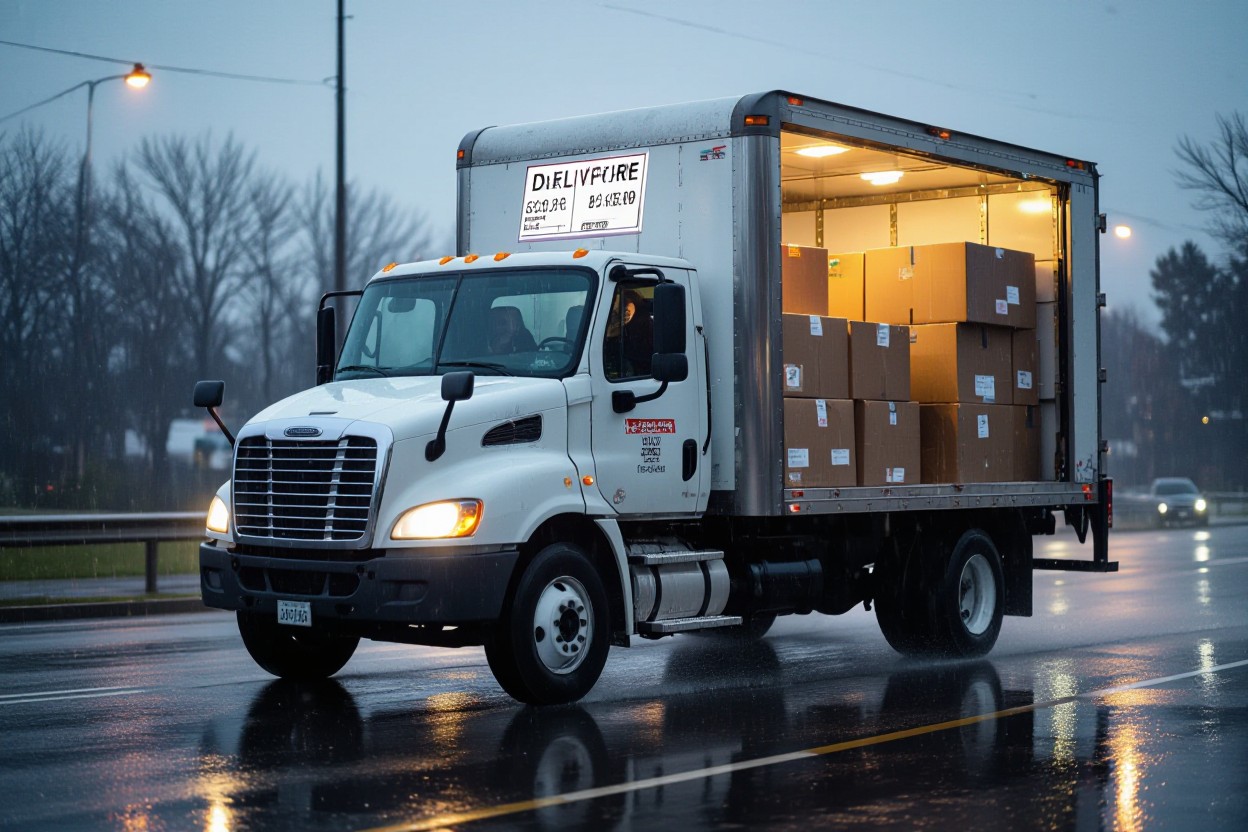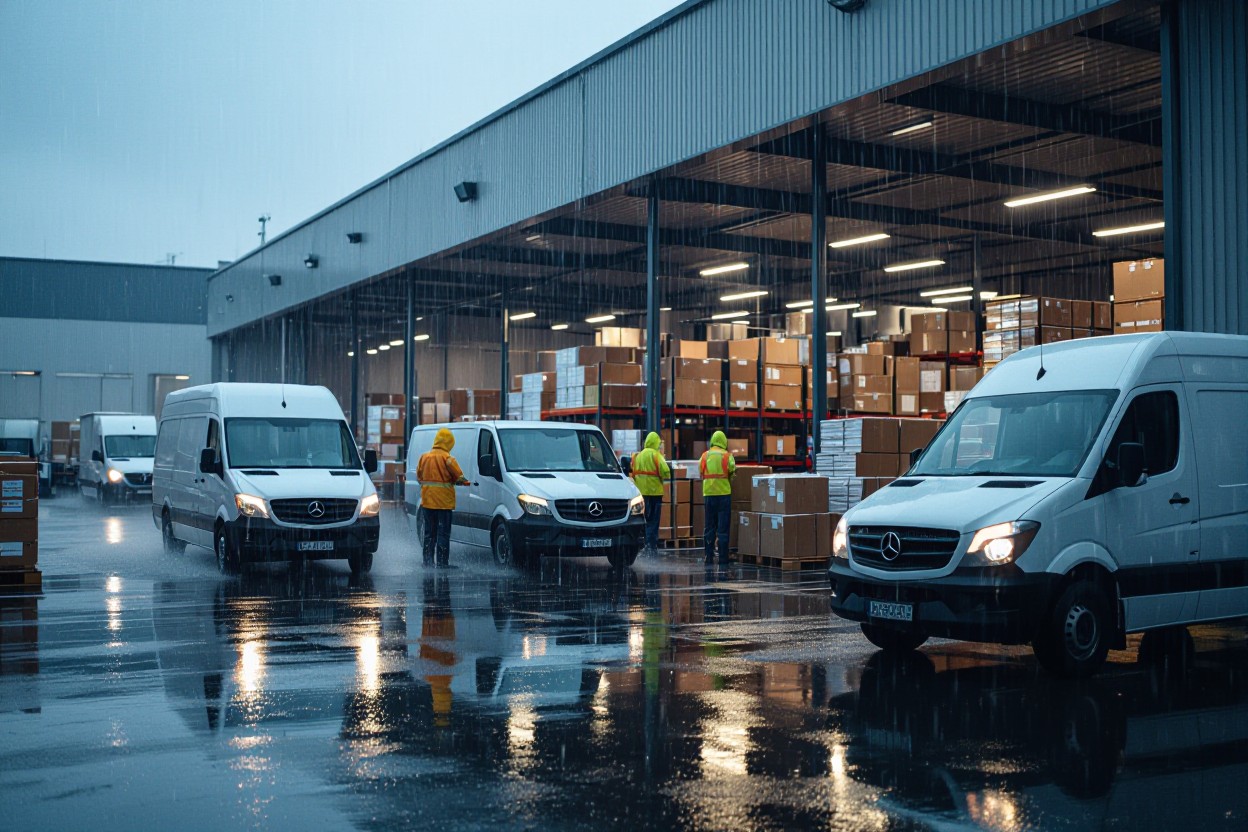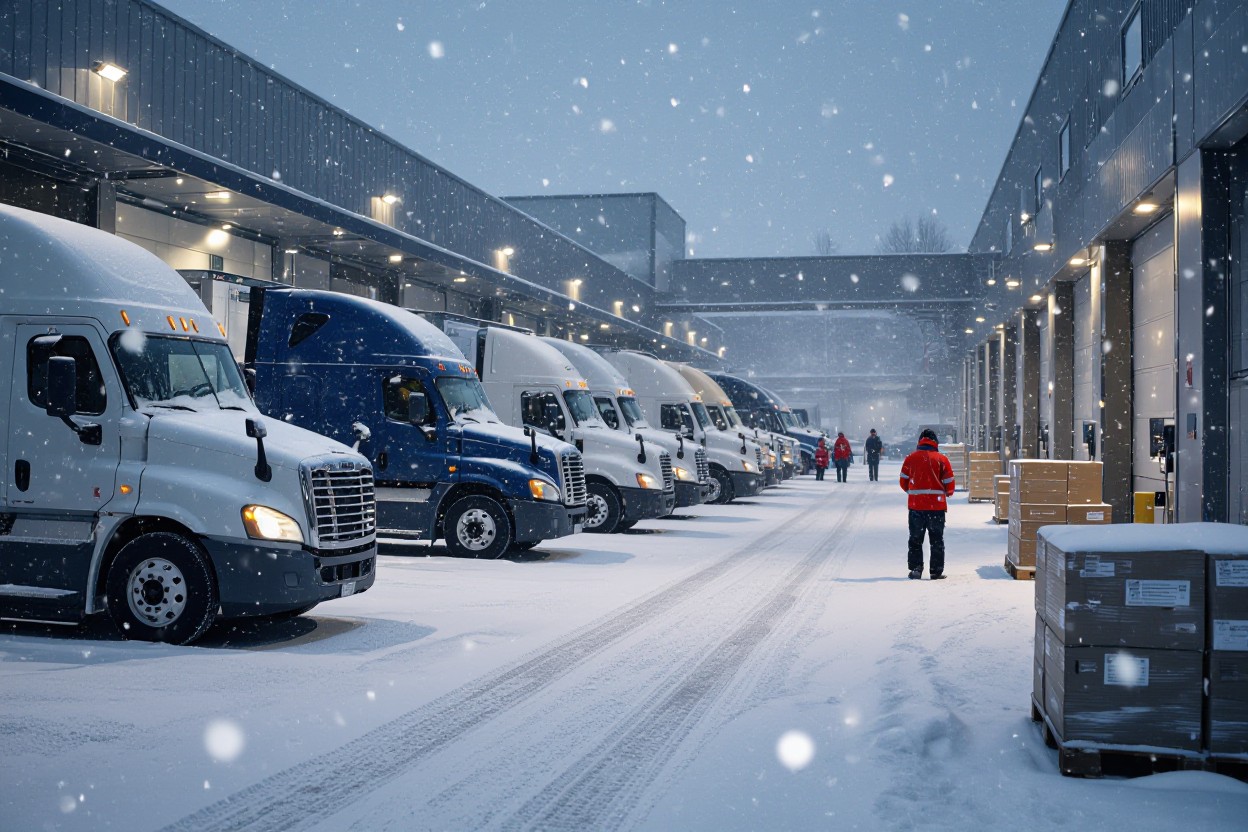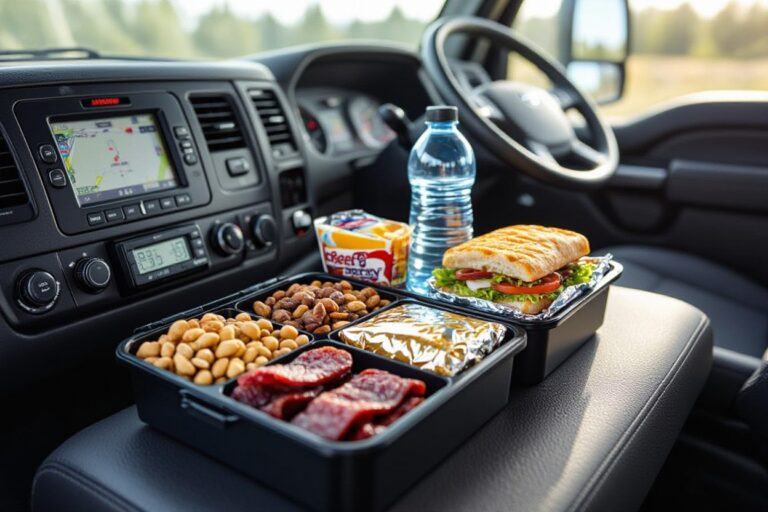
Zephyrus winds and flash floods can transform a routine shipment into a hazardous delay, so I analyze forecasts and historical patterns to advise you on timing. I explain how ice, fog, and high winds increase risk and slow carriers, and I show how proactive scheduling, real-time tracking, and flexible routing reduce disruptions and protect your delivery commitments.
Rain, Snow, and Ice: The Natural Barriers to Logistics
I monitor precipitation closely because heavy rain reduces traction and flooding delays routes, while snow and ice create slipping hazards that force slower speeds and temporary closures. I advise equipping vehicles with proper tires and de-icing tools and building contingency windows so you can protect drivers and keep parcels moving.
Wind and Visibility: Unseen Influences on Delivery Routes
I track wind and visibility because gusty winds can topple trailers and delay high-profile vehicles, and low visibility from fog or heavy rain increases collision risk. I change routes, adjust schedules, and brief drivers so you can avoid the worst exposures and maintain safe, reliable service.
When I dive deeper into wind and visibility I watch forecasted gusts, crosswinds and reduced ceilings because crosswinds and microbursts can cause rollovers or sudden lane drift, high winds can fling debris into paths, and poor visibility leads to delayed braking, missed turns and higher collision rates. I enforce thresholds—speed reductions, alternate corridors, or temporary holds—push real-time alerts to drivers and customers, and use telematics and variable routing; proactive rerouting and clear driver briefings are the most effective measures to reduce risk and keep your deliveries on schedule.
Peak Seasons: How Holidays Affect Delivery Schedules
I see holiday peaks compress carrier capacity, pushing longer transit times and missed delivery windows. You should expect delays as demand spikes and carriers prioritize express lanes. I advise shipping earlier, splitting loads across carriers, and setting clear customer expectations. The most important operational change is adding buffer days; high volume, congested hubs, and weather-related congestion create the biggest risks, while expanded carrier schedules and temporary hubs offer relief.
Long-Term Weather Trends: Preparing for Climate Variability
I track rising frequency of extreme weather—hotter summers, heavier rainfall, stronger storms—that reshapes delivery reliability over years. You should fold climate projections into route planning, invest in resilient infrastructure, and diversify last-mile options. The most important long-term risk is systemic route disruption from more frequent floods and storms, while opportunities include predictive analytics and adaptive scheduling to preserve service quality.
I build scenarios with 5–20 year horizons so you can test supply chain impacts under hotter, wetter, and stormier conditions. I recommend relocating critical inventory above flood lines, electrifying and shading vehicles to reduce heat-related failures, and contracting flexible warehousing near multiple transport nodes. Prioritize investments in real-time weather feeds, route optimization that reroutes around flooded corridors and wildfire smoke, and contingency carriers for severe events. These steps reduce exposure to infrastructure failures and prolonged outages and exploit positives like improved forecasting and smarter scheduling to keep deliveries predictable.

Technology’s Role in Predicting Weather Disruptions
I leverage advanced forecasting models, satellite feeds and machine learning to forecast delays and reroute shipments before conditions worsen. By combining real-time radar, historical patterns and carrier telemetry I can flag severe storms, icing and high-wind hazards hours ahead, giving you time to adjust schedules. The result is fewer missed deliveries, improved safety and more predictable lead times for your operations.
Flexible Routing: Real-Time Adjustments for Efficiency
I implement dynamic route optimization that reacts to traffic, weather and asset availability so drivers avoid risky corridors and delays. When I detect flash floods or icy roads, I can push alternative paths instantly to your fleet, balancing speed and safety. This approach delivers faster transit times, lower fuel use and better on-time performance for your customers.
When I expand on flexible routing I explain how I fuse live telematics, weather APIs and traffic feeds into AI route planners that score alternatives by time, risk and cost. The system flags severe weather events (black ice, whiteouts, flash floods) and weights driver hours, delivery windows and road closures so I can recommend a safety-first detour or a slightly longer route to avoid catastrophic delays. I also enable driver feedback and manual overrides so you retain control; the net effect is fewer crashes, lower delay variance and measurable fuel savings while keeping customers informed in real time.

Cost Analysis: How Weather Affects Delivery Pricing
I analyze how weather shifts pricing: I factor higher fuel use, detours, overtime and added insurance into fees so you see variable rates. Severe events drive a risk premium for carriers, while delays raise claims and handling costs—storms and icy roads increase accident and liability risk. I also note that predictable seasonal patterns let you plan surcharges that yield stable revenue for continued service.
Customer Satisfaction: The Fine Line Between Promptness and Patience
I balance speed with realistic expectations to protect your experience: fast delivery when weather allows, honest delays when it doesn’t. Clear tracking and proactive alerts reduce frustration and returns—transparent communication is the most effective remedy. I avoid promising unreachable windows because missed deadlines and spoiled goods damage loyalty, while generous compensation policies can be a positive differentiator.
I dig into tactics I use to maintain satisfaction during bad weather: I set clear service tiers and cutoff thresholds so you know when I will delay or pause shipments, and I empower drivers to prioritize safety over deadlines—driver safety and customer health are non-negotiable. I also monitor delivery status in real time to trigger refunds, reschedules, or credits when delays exceed agreed windows, turning potential complaints into opportunities to build trust rather than losses.
Proactive Planning: Building Resilience into Supply Chains
I proactively model weather risk, pre-position inventory, and create buffer time so I can reroute shipments when severe storms or route closures occur; I also diversify carriers and use dynamic routing to maintain service, which reduces delays and preserves safety and revenue.
Communication with Customers: Setting Realistic Expectations
I tell customers early when weather affects routes, giving clear windows and proactive alerts so you can plan; I prioritize transparent updates, offer alternate delivery options, and emphasize safety-first policies over speed to reduce frustration and limit unexpected returns.
I use multi-channel notifications (SMS, email, app push) and a live status page so you see real-time ETAs and known delays; when conditions worsen I send immediate advisories explaining safety impacts and options, including reschedule, pickup, or refund. I train CS reps with scripts that acknowledge disruption, give actionable next steps, and escalate high-risk cases like perishable shipments or medical supplies—those are high-risk and demand rapid attention. I track outcomes to refine messaging and share positive milestones (driver on-scene, cleared routes) to rebuild confidence and reduce anxiety.
Final Words
Considering all points, I assess that weather can delay transit, reroute shipments, and require safety holds; I advise you to plan buffer days, track real-time updates, and communicate expectations to customers. By accounting for seasonal patterns and using flexible logistics, I help you minimize surprises and maintain on-time performance despite adverse conditions.



